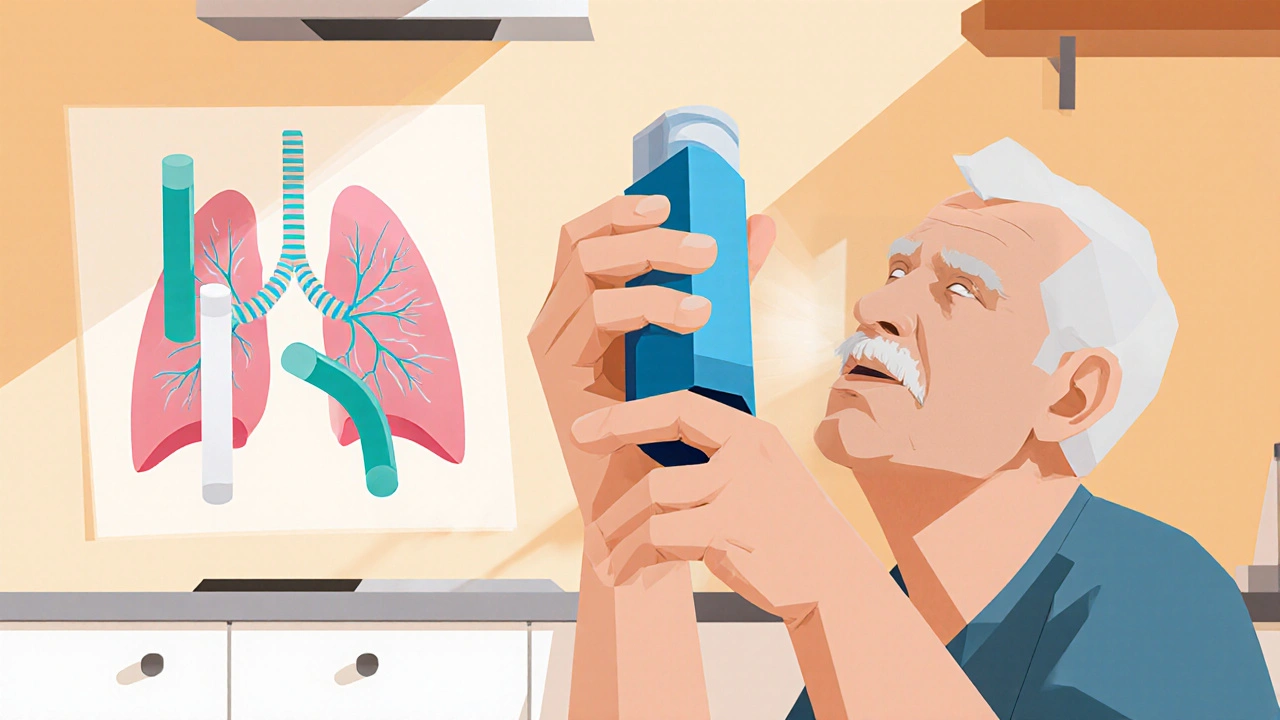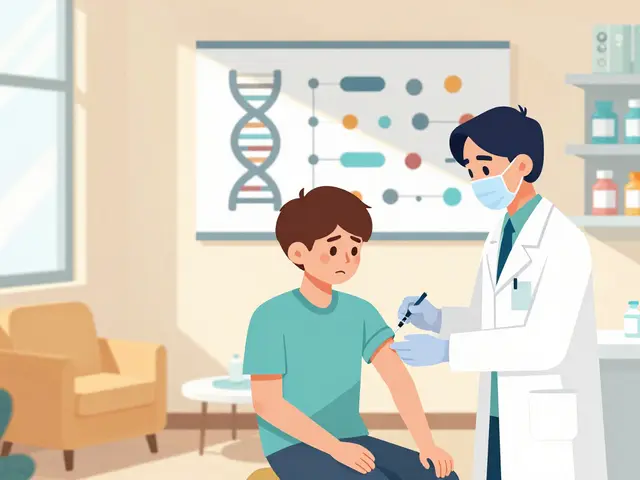COPD treatment: what actually helps you breathe easier
COPD doesn't have to control your life. With the right mix of inhalers, rehab, and simple daily habits you can cut flare-ups, stay active, and feel better day-to-day. Below I give clear, practical steps you can use now—no fluff, just what works.
Core treatments that make the biggest difference
Inhalers are the backbone of COPD care. Short-acting bronchodilators (SABA or SAMA) ease sudden breathlessness. Long-acting bronchodilators (LABA and LAMA) reduce symptoms and hospital visits when used regularly. Many people do best on a combination inhaler that pairs a LABA with a LAMA, or adds an inhaled steroid (ICS) if there are frequent flare-ups or asthma features.
Oxygen therapy helps people with low blood oxygen. If your doctor measures resting oxygen saturation under 88% or sees low levels during sleep or exertion, supplemental oxygen can improve energy, sleep and survival for some patients.
Pulmonary rehabilitation is often underrated. A supervised program with exercise training, breathing techniques and education reduces breathlessness and improves stamina. Even short programs (6–8 weeks) show real benefits.
During flare-ups doctors may prescribe short courses of oral steroids and antibiotics if infection is likely. For chronic sputum or frequent exacerbations, drugs like roflumilast can lower the number of flare-ups for some patients. Always follow your clinician’s plan.
Daily habits and small changes that pay off
Quit smoking now if you still smoke. Smoking cessation is the single most effective step to slow COPD progression. Use nicotine replacement, prescription meds, or counseling—combine methods for the best odds.
Learn proper inhaler technique. Many people lose benefit because they don’t inhale correctly. Ask a nurse or pharmacist to watch you use your inhaler and correct your technique.
Get vaccinations: annual flu shots and a pneumococcal vaccine as recommended. These reduce the chance of severe infections that trigger hospital stays.
Keep active with paced exercise—walking, stationary bike, or rehab classes. Even short daily walks increase endurance and reduce breathlessness over time.
Monitor symptoms and act early. If you notice increased cough, color change in sputum, more breathlessness, or fever, contact your provider. Early treatment often stops a full-blown exacerbation.
Know when to consider procedures: lung volume reduction surgery, bronchoscopic valves, or transplant are options for select patients with severe emphysema or persistent disability despite optimal medical care. A specialist can explain the risks and benefits.
Finally, build a simple action plan with your care team—list medicines, when to use rescue inhalers, when to call for help, and when to go to the ER. That plan often prevents panic and gets you faster treatment during a flare-up.
If you want help choosing inhalers, comparing dual bronchodilators, or finding pulmonary rehab near you, check our related articles on inhaler choices and rehab programs. Small steps add up—start with one change this week.
Learn how tiotropium bromide works, master the Respimat inhaler technique, tackle common usage problems, and get practical tips to improve your COPD treatment.
Continue reading...
Wondering if Breztri Aerosphere stands out as the top triple-therapy inhaler? This article digs deep into clinical trial data, side-by-side performance with competitors like Trelegy and Enerzair, and what real patients actually stick with in everyday life. You’ll get insider info on side effects, device design, cost factors that affect adherence, and practical tips for picking the right inhaler. We’ll also point you to other reliable alternatives in case Breztri isn’t your match.
Continue reading...




